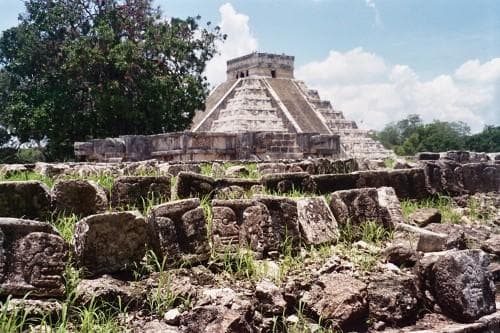Advertisement
Apocalypse Psychology: Deeper Reasons Why Some Expect Doomsday

By Sara Knight
Guest contributor
December 21st will be the day to end all days. A galactic alignment 26,000 years in the making will realign the Earth’s equator with the sun; at the same moment our planet will be directly centered on the Milky Way’s galactic plane.
It will also be a historic “year zero” according to arcane Mesoamerican texts, signaling, some think, a “great end” to the world as we know it.
This will also be the day that a rogue planet hurtling through space is scheduled to smash into Earth. Massive solar flares will burst off our sun, scorching our planet’s surface, sparking gargantuan earthquakes, monstrous tsunamis, and the end of humanity.
Well, that’s the theory.
This “2012 phenomenon” may be more creatively developed than most apocalypses, but the death-wish zeitgeist has been part of the human experience for centuries – 23 to be exact. Biblical scholar Dr. Lorenzo DiTommaso says this Doomsday worldview has been present in all cultures and in all eras, though it first appeared in the Book of Daniel, a Judaic text from the 2nd century B.C.
There are many droll examples of prediction and subsequent back-pedaling (remember the May 2011 rapture and then the quick recalibration of the Last Day?). But the real question is not when, it is why. In the exasperated words of Boston University archaeology Professor William Saturno: “Why do we keep trying to kill ourselves off?!”
Perhaps because popularizing Armageddon is a safe way for us to express an underlying anxiety about our own mortality and the state of the world. “There’s always something – the nuclear bomb, Communism, and now terrorism,” says social psychologist Jeff Greenberg. “We need these things to heroically battle against to get past our anxiety and helplessness.”
This “Terror Management Theory” sprouts from psychologist Ernest Becker’s Pulitzer-winning "The Denial of Death," which posits that civilization is humanity’s answer to the threat of impending mortality.
Greenberg, one of the theory’s founders, whose birthday happens to fall on December 21st, explains that humans, like other animals, have a basic survival mechanism wired into us; yet unlike other animals, we are aware of our eventual death. To cope, we devise elaborate cultural traditions and worldviews that lend us a sense of symbolic permanence. From this vantage point, apocalypticism might be equivalent to scratching a nagging itch caused by our looming mortality.
Armageddons tend to attract certain people – usually those who feel marginalized – as an expression of discontent and hope for a better future, says Greenberg. To religious Doomsdayers, an apocalypse would bring a paradise to Earth or their soul forever to heaven. To secular Doomsdayers, preparing for the worst is a way to distract from the anxiety and vulnerability of daily life. After all if you’re doing something, at least you’re not helpless.
The 2012 hubbub can be traced back to several archaeologists in the ‘50s and ‘60s who interpreted a traditional calendric system of the astronomy-savvy ancient Maya of Mesoamerica as ending on 13.0.0.0.0, or in the Gregorian calendar we use, 12/21/2012.
This date was not actually a Doomsday to the Maya but rather the end of one cycle (a period of time called a b’ak’tun) in their Long Count Calendar, Saturno said, though some archaeologists popularized the idea that this date meant the Big End.
Saturno believes the misconception of the end of b’ak’tun signaling an apocalypse is due to Western arrogance (mangling a cyclical concept of time to fit our linear version) and a general anxiety about groups of zeros occurring simultaneously (one word: Y2K).
Since then, the date has snowballed to accumulate all sorts of end-of-the-world happenings, not only astrophysical catastrophes.
And that’s what makes this Day of Reckoning not your average everyday Apocalypse: Instead of one main dire vision declared by a messianic leader, this Doomsday encompasses dozens of calamities bubbling up from thousands of different people on the Internet.
DiTommaso calls this process “super-flat” to reflect the nature of Internet-age information exchange – unanchored, widespread, and devoid of a deeper meaning or roots in tradition.
The “super-flatness” of 2012 explains the vast number of cataclysms that are to befall humanity on December 21st. It can seem as if everyone got to tack on their ruination of choice. Galactic plane alignment, pole shifts, tsunamis, rogue planets, even the day the Twinkies finally go bad – everyone gets to contribute.
“Technology is changing the way we think,” DiTommaso says, adding “this is the world’s first public Apocalypse.”
Perhaps the apocalypses of the future will be regarded as entertainment; perhaps there will even be a national holiday dedicated to our impending doom – it would at least relieve some pent-up universal angst. Then again, maybe it won’t matter after December.
Further reading: On Point with Tom Ashbrook: The Real Mayan Cosmology.
Sara Knight is a writer currently studying at Boston University in the science journalism graduate program.
This program aired on December 20, 2012. The audio for this program is not available.